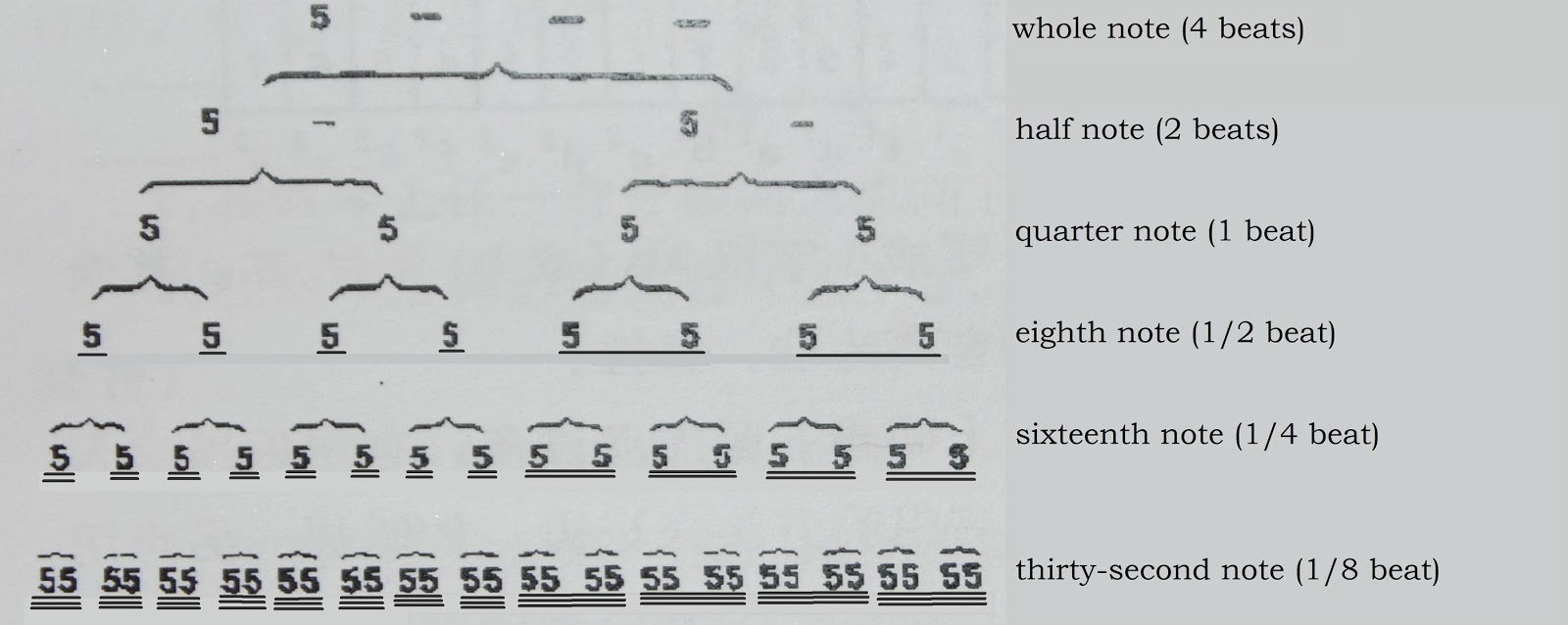Fig.1 Score for The Red Bean Poem
The name of the song is called The Red Bean Poem (紅豆詞 - Hong Dou Ci), red bean in Chinese literature had always symbolized lovesickness. The lyrics were extracted from a novel written in the Qing Dynasty (清朝) by the famous novelist Cao XueQin (曹雪芹) called Dream of the Red Chamber (紅樓夢 - Hong Lou Meng). It is meant to be a poem that one of the female character from the novel "wrote" about the misfortune in her relationship with her arranged fiance who never married her.
More details about the song and lyrics translation can be found here.
◎◎◎◎◎◎◎◎◎◎◎◎◎◎◎◎◎◎◎◎◎◎◎◎◎◎◎◎◎◎◎◎
Fig.2 Score for The River Runs Red
Translation of the poem can be found here.
※※※※※※※※※※※※※※※※※※※※※※※※※※※※※※※※※※※
Note that these two scores also have the more well-known staff notation used in Western art music; however, I am still going to learn the pieces by the Numbered Musical Notation, and the aid of online video resources, as traditional Chinese music were supposed to be pass down through observation, and the Numbered Musical Notation is what they use for traditional musical instruments nowadays.
These musics were not specifically written for the Xun, in fact there really wasn't many music written for any specific instrument in Chinese traditional musical world; therefore, performers will have to make their own judgement call as to which set of fingering should they use. In this case, the two pieces I chose range from one-lower-dot 5 to one-higher-dot 1 or 2, so I would adapt the following set of fingerings:
Fig.3 Fingering I am using for the two pieces I chose
○●○●○●○●○●○●○●○●○●○●○●○●○●○●○●○●○●○●○●○●○●○●
The reason I chose these two songs was that they both mainly consists of 12356 (do-re-me-sol-la), now anyone with basic music theory training would know that these are the notes in a pentatonic scale, which is one of the main characteristics of Chinese traditional music. Also these two songs are actually written before any Western culture got into China, so it is more traditional than a lot of other "traditional" music written by modern Chinese composers.





